- Home
- James Rollins
The Seventh Plague Page 28
The Seventh Plague Read online
Page 28
She nodded.
Who says I have to solve this on my own?
Hadn’t her father taught her that true discoveries were a team effort? Not that he necessarily followed that dictate, at least when it came to taking credit. His name somehow always ended up being listed first on published papers.
Jane sighed. “When he circled that butterfly inside the stone heart, marking my name there, it could have been him merely acknowledging my love of butterflies, trying to share this last connection to me.”
“But you don’t think so.”
“My father was often kind, sometimes generous, but never a sentimentalist.”
“No, he was not,” Derek concurred.
“So this last effort had to be more significant,” Gray said.
“I racked my brain about why he would show me this. As I mentioned before, butterflies were a common image in Egyptian art representing transformation. The species typically depicted—as it was inside the heart—was the common tiger monarch, or Danaus chrysippus, a butterfly native to the Nile River basin.”
“We were talking about it earlier,” Derek said. “When she mentioned the scientific name, it struck me. I remembered seeing the butterfly in Livingstone’s old letters. So I showed Jane.”
Derek pulled up the page on his tablet and showed Gray.
“So it’s a sketch of a caterpillar and a butterfly.” Gray squinted at the name and read it off the screen. “Danaus chrysippus, just like you mentioned.”
Jane reached and tapped the image. “Only that is not the common tiger monarch. The spotting on its wings is all wrong. My father would know I would never mistake this image for the true Danaus chrysippus.”
Gray leaned closer. “It must be another of Livingstone’s maps. Like the Egyptian scarab that pointed to the buried goddess.”
Jane nodded. “Yet another map hidden in another Egyptian image.”
“But where’s the map?” Gray asked. “I don’t see it.”
“Watch.” Derek withdrew his tablet to manipulate the image. He tipped the butterfly up on the edge of a wing and showed them.
Then he set to work. “If you erase everything but the spotting in the lower wing, you can see the pattern that remains looks like a series of lakes and interconnecting waterways. And note the small X that Livingstone drew near one of the rivers.”
“Let me guess,” Gray said. “You figured out a place that corresponds to that configuration of rivers and lakes.”
Derek nodded. “It’s just down the road from where we are now . . . or more precisely, down the river.”
He brought up a tiny map and placed it next to the drawing hidden in Livingstone’s butterfly.
Derek explained, “Look how Lake Victoria matches up, as do the smaller lakes.”
Gray took the pad to examine it closer. “And Livingstone’s X sits along a small river that flows out of Rwanda and into Lake Victoria.”
Jane’s voice sharpened with excitement. “I believe what we’re looking at might be the source of the Nile.”
“Or at least one of the sources,” Derek added. “You can see other rivers flowing into Victoria, which is why the true origin of the Nile is still disputed.”
Gray frowned, looking suddenly concerned.
Jane turned to him. “What’s wrong?”
Gray straightened and pulled out the test tube her father had buried in the sand. He removed the rubber stopper and unrolled the scrap of leather inside, revealing again the faint line of hieroglyphics.
“If I remember right,” he said, “this translates roughly as taking a boat to the mouth of the river. And something about elephants or elephant bones.”
Jane reached for the relic, then pulled her hand back. “The mouth of the river. Maybe that’s referencing the source of the Nile. Just like we were talking about.” She pointed to Derek’s map. “Maybe it’s saying go to that place marked with an X.”
“But how can we be sure?” Derek asked. “How do we know what’s written here is even important?”
Gray pointed to either end of the line of hieroglyphics. “There are a lion and a kneeling woman framing this section. Aren’t those the symbols of Tutu?”
“And they’re also found on Livingstone’s aryballos,” Jane added. “The two symbols are even facing the same direction as the artifact’s profiles.”
Gray looked at her. “Maybe your father recognized the same and cut this section off a mummy he found down there, seeking to hide it. Later he buried it to safeguard it, while leaving behind a clue for you to follow.”
“And don’t forget the elephants,” Kowalski reminded them, his eyes flashing with a bit of excitement. “Remember that cute—I mean small elephant pot we saw before.”
Jane nodded, sensing pieces were starting to come together—but not yet whole. “He’s right.”
Derek suddenly looked sick. “What if whatever was in those pots was the cure?”
Kowalski scowled. “I told you we should’ve taken one.”
“No,” Jane said. “My father would have tested anything found in those pots. That can’t be it.”
“Plus,” Gray added, “whoever cleared the place out would have taken the pots if they thought they were important.”
Jane pointed to Derek’s map. “The answer must be there. My father knew it, but he couldn’t get there himself, and he didn’t want his captors to know about it.”
“So he tried to escape and reach help.” Derek turned to Jane. “And knowing he might fail, he left clues for his daughter to follow.”
She knew Derek was right. With tears threatening, she turned away.
From the next room, Seichan entered, toweling her hair. She must have sensed the tension and excitement. “What’s going on?”
Gray smiled. “Time to pack your bags.”
Kowalski rubbed his palms together. “We’re gonna find us some elephants.”
3:03 P.M.
Valya refused to take any more chances.
She waited at a small airstrip outside Khartoum. The sun had baked the sand and dirt to a concrete hardness. The field was not on any map. It was used by drug smugglers and Sudanese rebels. The police and army were paid well to look the other way.
For all intents and purposes, this place didn’t exist.
She took solace in this fact. This was her true home, the cracks of the world. After plunging her grandmother’s dagger into the neck of the man who killed their mother, she took her brother and fled into those cracks, where, whether out of distaste or fear, no one truly looked. Back then, she and Anton had each other.
But no longer.
Anton had found a new home, a new heart.
So be it.
She would return to where she belonged, with or without him.
A grumble of an engine drew her attention to the right. An open-air truck crossed through a gate in a dilapidated chain link fence. A dark-skinned former Sudanese soldier with an assault rifle waved them through. Valya stepped around the parked Cessna to meet the truck.
Kruger hopped out, followed by four of his men. They were all that had survived the destruction under the desert hills. Four others had died. He had lost half his teammates down that hole. Kruger wore those deaths on his face as he stalked over. It had not been hard to convince him of the change in plans.
“Well?” she asked.
He nodded, rubbing a set of raw and bloody knuckles. “Took some convincing, but I confirmed what you overheard. Their flight manifest has them flying into Rwanda.”
Valya had kept her distance from the enemy after being ambushed by the nomads in the desert. While Seichan and Jane McCabe had regrouped at the dunes, she had used the sharp eyes of the Raven in the sky to spot where the boy had abandoned the Unimog. She circled to that spot while the others were distracted, slowing to limit her dust trail. She finished her mission from last night and buried a GPS transmitter in the truck’s wheel well—then sped off to rejoin Kruger.
She took a deep breath now, stretc
hing her neck. She felt looser, less constrained, freer than in many years. Her mistake earlier had been to fixate on completing the task assigned her. While focused on capturing Jane McCabe, she had let her attention on the fleeing truck lapse, even pulling the Raven assigned to it, allowing the boy to meet up with his people unseen.
That would not happen again.
After joining Kruger, she had easily tracked the truck’s journey back to Khartoum and discovered where the group had holed up. Still, she kept her distance, having learned her lesson. From a quarter-mile away, she had eavesdropped upon their conversation, listening with a laser microphone, its invisible infrared beam fixed to the window, picking up minute vibrations in the glass and whispering their words in her ears. Unfortunately, such technology was not flawless. Words were missed. The conversation had annoying gaps. She got the gist of where they planned to go, but she had wanted confirmation and sent Kruger to get it.
It seemed her targets had hired a bush plane—a Cessna 208 Caravan—to ferry them south to Rwanda. She would follow them, even taking the same plane, only hers was a military variant arranged by friends of Kruger. It was a Combat Caravan, a plane used by rebels throughout the region, even in Iraq.
She glanced under the wings to the payload mounted there.
Two AGM-114 Hellfire missiles.
The edges of her lips tugged up in satisfaction.
She was done bowing to masters, of being reined in by their restraints and goaded into making mistakes to meet their expectations. She intended to be free again, free to return to cracks in this world. Knowing that, she saw no need to adhere to the prior restrictions placed on her.
“So are we sticking with the new plan?” Kruger asked as he stepped into the plane.
She followed him inside. “Yes, we kill them all.”
FOURTH
THE PAINTED JUNGLE
∑
22
June 3, 10:08 A.M. EDT
Ellesmere Island, Canada
By the time the guards came to collect him, Painter knew something was wrong.
Hartnell had given him an hour—until eight o’clock—to decide whether or not to cooperate in helping them capture Kat and Safia. That hour had come and gone, leaving him pacing his cell. Finally, after another two hours, a pair of guards barged into his room, guns raised, and forced him to don a parka and thick boots before cuffing his wrists in front of him and marching him out.
The delay was worrisome. Had something happened to Kat and Safia? Was his cooperation no longer a concern? If so, where were the guards taking him?
The outerwear and lack of ankle restraints suggested he’d be doing some walking, likely into the cold. Even the guards wore heavy coats. He tried to ask questions of them, only to be rebuffed.
They headed down three levels, rather than out.
It made no sense.
Where are we going?
At last, they reached a set of steel doors. One guard unlocked the way with a keycard and headed through first. The second man pushed Painter forward with the muzzle of his assault rifle.
The reason for the warmer clothes was immediately evident. The passage ahead had been cut out of the island rock. Though naturally insulated from the elements, the air was still Arctic-chilled. Each breath puffed white into the cold. The rough tunnel extended several hundred yards without a single door or side room. A wired string of caged bulbs lit the way.
Painter lifted his chained arms and ran his fingertips along one wall.
Must be an old mine tunnel.
He suddenly suspected where they were headed. At the far end, another identical set of steel doors sealed the passageway. His group followed the same dance to pass out of the tunnel and back into the modern age. Steel, glass, and concrete block opened around him, revealing another section of the station.
This extension of the base curved to either side, walled by blast windows across its front, all looking out into the tiered pit he had spotted from the air when he and Kat had first flown here. While this piece of the station failed to completely encircle that quarter-mile-wide hole, it did hug the half on this side, with its length subdivided into various workstations. People in lab coats and coveralls of various hues scurried about or sat hunched at monitors. Chatter was low, as if they were all inside a cathedral.
And maybe they were, but one built to worship science.
As Painter drew near the thick window, he could see storm clouds rolling darkly past the sky. He estimated this U-shaped perch was positioned halfway up the excavation’s wall. Down below, lit by giant spotlights, the flat bottom of the old mining pit supported the massive square base of Hartnell’s new incarnation of Wardenclyffe Tower. Steel beams rose past the window, forming a pyramidal skeletal skyscraper, ending at a massive bowl of concentric rings of copper and colossal electromagnets, all cradling a conducting sphere.
No, not a sphere.
From the air, the top of the tower had looked like a perfect globe, but from this lower vantage, Painter realized that what he had viewed was only the rounded top of a giant egg.
He pictured Clyffe Energy’s logo—the Egg of Columbus.
Was this design purposeful or only a conceit?
“Ah, there you are!” Simon Hartnell came striding toward him from one of the stations. He wore a silver parka, unzipped at the moment. “I apologize for keeping you waiting.”
“I’m on your schedule.” Painter glanced at all the activity. “What’s going on? This looks far busier than what I would imagine to be a typical workday.”
“So it is, so it is.”
The man set off again, clearly intending for Painter to follow, so he did. Not that he had much choice with the two guards at his back. Hartnell collected another figure in a parka along the way, a short Indian man with a pinched, concerned face.
Hartnell introduced him. “This is Dr. Sunil Kapoor.”
Painter recognized the name of the physicist. He had won the Nobel Prize for his work with plasma, specifically involving a novel way of creating it using vaporized metal. Clearly Hartnell was standing on more than just Nikola Tesla’s shoulders to complete his vision.
“We’re about to head out and do a final systems check of the remote monitoring stations.” Hartnell set off. “It’s all very exciting.”
Kapoor did not look as enthralled. The man kept glancing over his shoulder at the steel pyramid outside. Still, Hartnell would not be refused.
As they crossed along the curve of the tower’s command station, a new window appeared, opposite the other. Painter slowed and peered through it to a neighboring cavern. It was nearly as deep as the pit outside, but not open to the sky. A black lake filled the bottom, but lights along an elevated catwalk revealed the water to be a deep crimson.
Painter went cold at the sight, knowing what he was seeing. Here was the fuel for Hartwell’s vision. The bastard had cultured a whole sea of Tesla’s Pestis fulmen. Men in hazmat suits worked along the catwalk, holding clipboards and shining lights along steel tubes that ran from the lake below to the roof above.
Oh my god . . .
“Everyone aboard,” Hartwell said, welcoming them into the car of a funicular train whose tracks angled along the sloped wall of the pit, running the length from top to bottom.
Painter climbed inside with the others. A window of glass allowed him to peer at the tower as the car jerked and began to climb upward. “From all the commotion, I take it that you’ve moved up your schedule.”
“Indeed. Upon further consideration, I thought it prudent.”
Painter understood his logic. The man didn’t want anyone interfering with his test run, especially if Kat and Safia reached outside help.
Painter turned to Hartnell. “So you’re still planning to seed the ionosphere with the microbe as part of this test run.”
“No reason to take half measures.”
Painter looked at Dr. Kapoor. “And you have no qualms about this?”
The Indian physicist glanced to H
artnell, then back to Painter, and gave a small shake of his head.
Not exactly the most ringing endorsement.
“We’ve run countless scenarios,” Hartnell assured him. “Considered every variable.”
Painter looked to the sky. “When it comes to hacking the planet, you can’t know all the variables. You could end up setting fire to the atmosphere.”
Hartnell scoffed. “The very same concern was raised with the testing of the first atomic bomb, but it didn’t stop the Manhattan Project from continuing.” He cast a doleful eye at Painter. “Likewise, the same charges were made against HAARP.”
That was certainly true.
“If we stopped progress for every Chicken Little’s claim that the sky was falling, nothing would ever get done.” Hartnell sighed loudly. “We’d still be huddling in cold caves, afraid of fire.”
The train car reached the lip of the pit, and they all climbed out into the blowing wind and dry snow. Parkas were quickly zipped. The group set out across the steel forest of antennas. Thigh-thick cabling ran across the rock and through patches of stubborn snow.
Hartnell took them along a gravel path that led out of this forest.
No one spoke, hunched in their jackets, cheeks pulled into their hoods.
Far to Painter’s right, a Boeing cargo jet was being hauled out of a hangar and into the storm. It looked sturdy enough to withstand the gale, especially as the storm had calmed slightly over the past hour.
Painter knew the payload the jet was set to carry, picturing that black lake.
The group reached the fringe of the array and found two vehicles waiting for them. One looked like a golf cart with a sealed cab and large knobbed tires. Painter imagined it would be used by Hartnell and Kapoor to make their survey run.
This was confirmed when Hartnell lifted an arm to the other vehicle, a Sno-Cat. “Here’s your ride.” He pointed to a neighboring tall hill. “We maintain a communication shack up top. It offers the tallest vantage for direct-sight-line communication during solar storms. It’s to be your base of operation, to coordinate with Anton in convincing your companion and Dr. al-Maaz to deliver what they stole. For our sake and theirs. It can be very dangerous out there.”

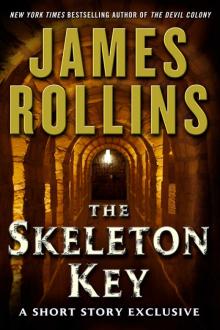 The Skeleton Key
The Skeleton Key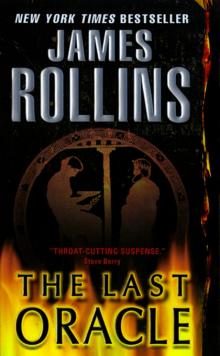 The Last Oracle
The Last Oracle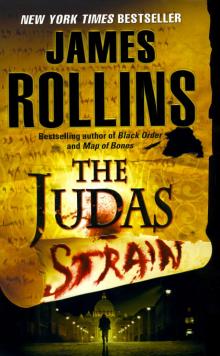 The Judas Strain
The Judas Strain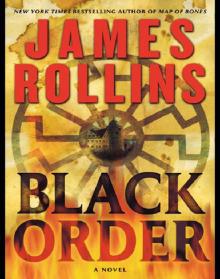 Black Order
Black Order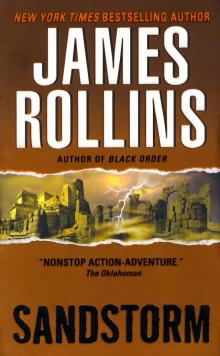 Sandstorm
Sandstorm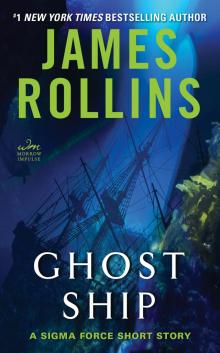 Ghost Ship
Ghost Ship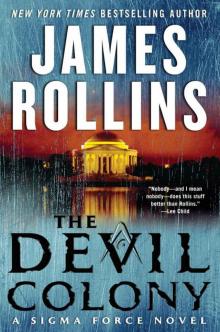 The Devil Colony
The Devil Colony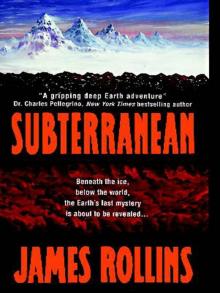 Subterranean
Subterranean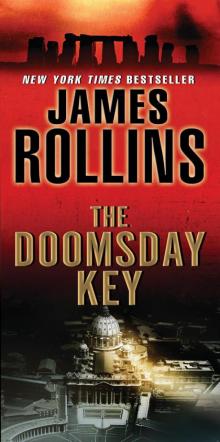 The Doomsday Key
The Doomsday Key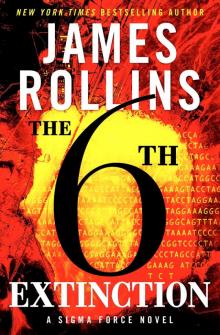 The 6th Extinction
The 6th Extinction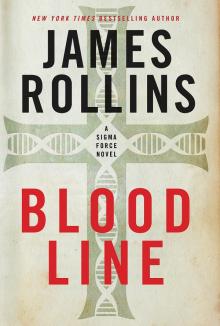 Bloodline
Bloodline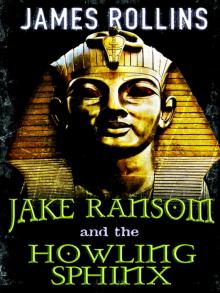 Jake Ransom and the Howling Sphinx
Jake Ransom and the Howling Sphinx The Midnight Watch
The Midnight Watch Map of Bones
Map of Bones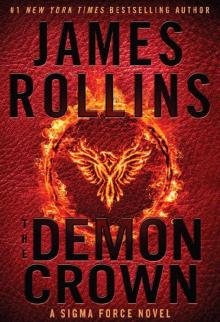 The Demon Crown
The Demon Crown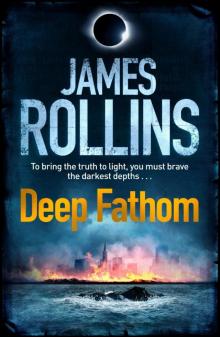 Deep Fathom
Deep Fathom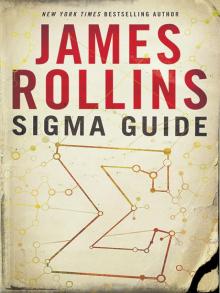 Sigma Guide
Sigma Guide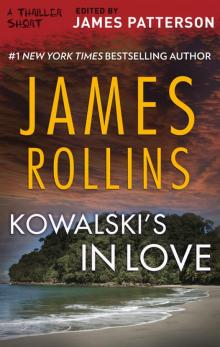 Kowalski's in Love
Kowalski's in Love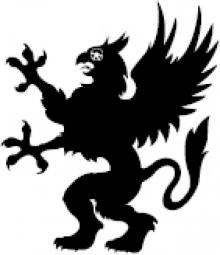 Jake Ransom and the Skull King's Shadow
Jake Ransom and the Skull King's Shadow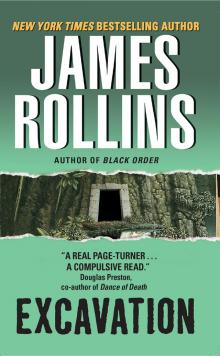 Excavation
Excavation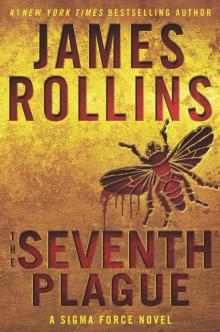 The Seventh Plague
The Seventh Plague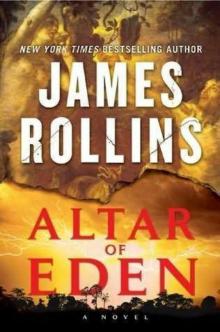 Altar of Eden
Altar of Eden Unrestricted Access: New and Classic Short Fiction
Unrestricted Access: New and Classic Short Fiction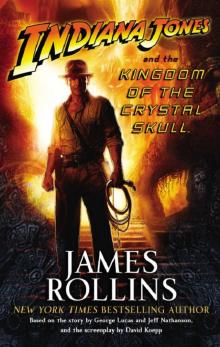 Indiana Jones and the Kingdom of the Crystal Skull
Indiana Jones and the Kingdom of the Crystal Skull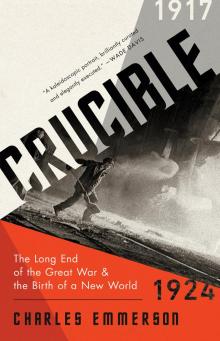 Crucible
Crucible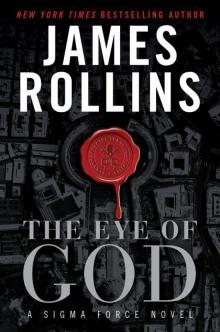 The Eye of God
The Eye of God The Bone Labyrinth
The Bone Labyrinth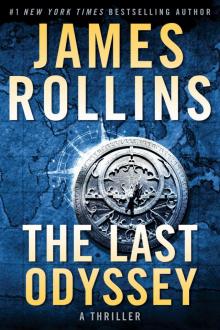 The Last Odyssey: A Thriller
The Last Odyssey: A Thriller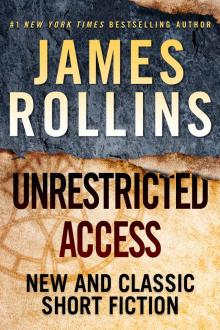 Unrestricted Access
Unrestricted Access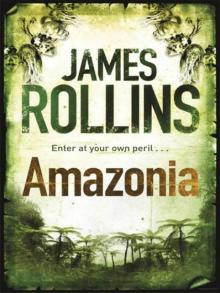 Amazonia
Amazonia Blood Brothers: A Short Story Exclusive
Blood Brothers: A Short Story Exclusive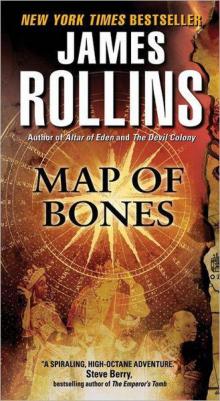 Map of Bones: A Sigma Force Novel
Map of Bones: A Sigma Force Novel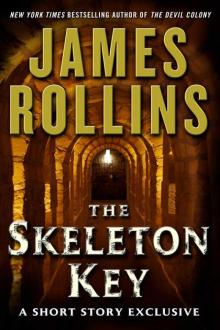 The Skeleton Key (sigma force)
The Skeleton Key (sigma force)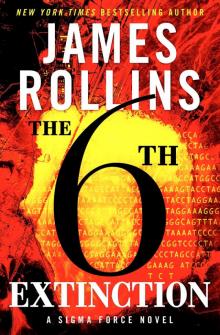 Sigma Force 10 - The Sixth Extinction
Sigma Force 10 - The Sixth Extinction Innocent Blood
Innocent Blood Map of Bones sf-2
Map of Bones sf-2 The Eye of God: A Sigma Force Novel
The Eye of God: A Sigma Force Novel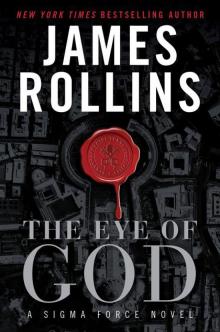 The Eye of God: A Sigma Force Novel sf-9
The Eye of God: A Sigma Force Novel sf-9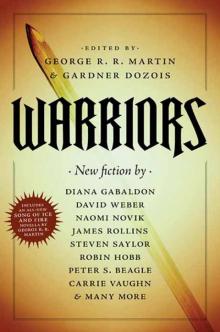 The Pit
The Pit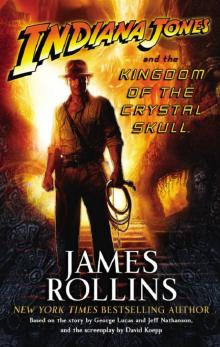 Indiana Jones and the The Kingdom Of The Crystal Skull
Indiana Jones and the The Kingdom Of The Crystal Skull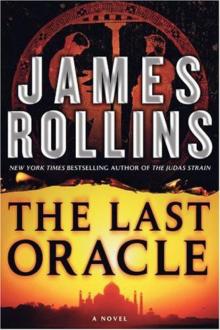 The Last Oracle (2008) sf-5
The Last Oracle (2008) sf-5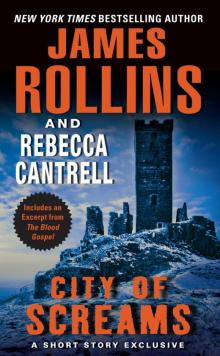 City of Screams
City of Screams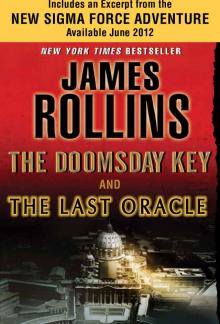 The Doomsday Key and The Last Oracle with Bonus Excerpts
The Doomsday Key and The Last Oracle with Bonus Excerpts The Judas Strain sf-4
The Judas Strain sf-4 Blood Infernal
Blood Infernal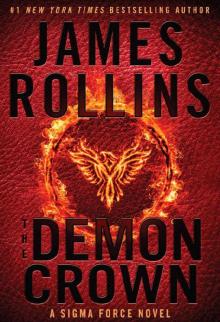 The Demon Crown: A Sigma Force Novel
The Demon Crown: A Sigma Force Novel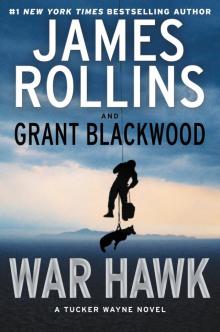 War Hawk: A Tucker Wayne Novel
War Hawk: A Tucker Wayne Novel SANDSTORM sf-1
SANDSTORM sf-1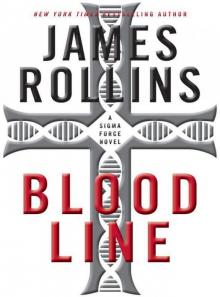 Bloodline: A Sigma Force Novel
Bloodline: A Sigma Force Novel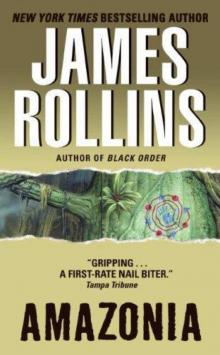 Amazonia: a novel
Amazonia: a novel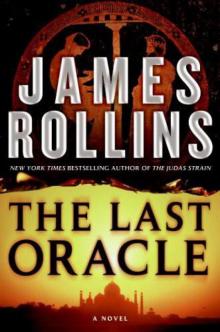 The Last Oracle: A Sigma Force Novel
The Last Oracle: A Sigma Force Novel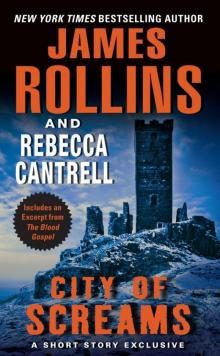 City of Screams (the order of the sanguines)
City of Screams (the order of the sanguines)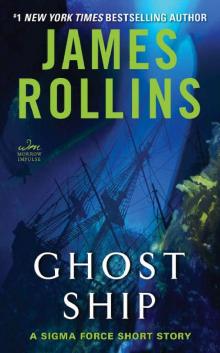 Ghost Ship: A Sigma Force Short Story
Ghost Ship: A Sigma Force Short Story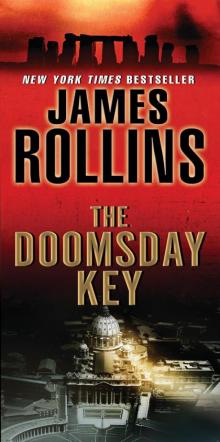 The Doomsday Key: A Sigma Force Novel
The Doomsday Key: A Sigma Force Novel